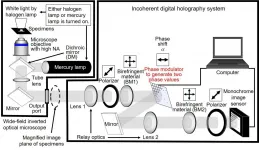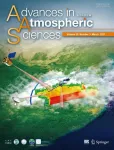(Press-News.org) Colorectal cancer is the third most common form of cancer. While 90% of cases are in people older than 50, there is an as-yet unexplained rising incidence in younger people.
Family history ranks high among risk factors for developing colorectal cancer, and people with such a history are often advised to get more frequent screening tests or start screening sooner than the recommended age of 45 years old. Those with a family history of cancer often seek out genetic tests to look for mutations linked to cancer risk. However, those tests don't always provide helpful information.
In a new paper in the American Journal of Human Genetics, Jacob Kitzman, Ph.D., of the Department of Human Genetics at Michigan Medicine, and a team of collaborators describe a method for screening so-called genetic variants of uncertain significance in the hopes of identifying those mutations that could cause disease.
To do this, they used a genetic condition called Lynch syndrome, also known as hereditary non-polyposis colorectal cancer. Like BRCA1, a gene known to cause certain breast cancers, there are a handful of genes behind Lynch syndrome that have been well described. However, "there's a whole universe of possible genetic variants that can occur in genes associated with Lynch syndrome that we basically know nothing about," says Kitzman.
Because most mutations are rare in the human population, it can be difficult to tell if any particular one is problematic. And studying one variant in a lab at a time takes a lot of time--often too much to be useful for making clinical decisions.
Using a technique called deep mutational scanning, the research team set out to measure the impact of mutations in the gene MSH2, which when mutated, is one major cause of Lynch syndrome.
"The key advance is rather than doing one mutation at a time, we did it in a pooled format which allowed us to test about 18,000 mutations in a single batch," says Kitzman.
Using CRISPR-Cas technology, they deleted the normal copy of MSH2 from human cells, and replaced it with library of every possible mutation in the MSH2 gene. This created a mix of cells where each cell carried a unique MSH2 mutation. This population of cells was treated with a drug known as 6-thioguanine, a chemotherapy that killed only the cells that had a functional variant of MSH2.
The counterintuitive idea, notes Kitzman, is that the surviving cells are the ones without functioning MSH2--which are the ones with mutations that are most likely to be disease-causing.
"We were basically trying to sit down and make the mutations we could so they could serve as a reference for ones that are newly seen or are amongst the thousands of variants of unknown significance identified in people from clinical testing," says Kitzman. "Until now, geneticists could not be sure whether these are benign or pathogenic."
The hope is that, with other patient-specific information, some of these variants may be able to be reclassified, and those people notified that they should undergo more intense screening.
Says Kitzman, "One of the next areas that will need some focus in the field of human genetics is to create these sorts of maps for many different genes where there is a clinical connection, so we can be more predictive when variants are found in an individual."
INFORMATION:
Other University of Michigan contributors to this paper include: First author Xiaoyan Jia, Bala Bharathi Burugula,Victor Chen, Rosemary M. Lemons, Sajini Jayakody, and Mariam Maksutova.
The work was supported in by the National Institute of General Medical Sciences and a Precision Health Fellowship from the University of Michigan.
Paper cited: "Massively parallel functional testing of MSH2 missense variants conferring Lynch syndrome risk," The American Journal of Human Genetics. DOI: 10.1016/j.ajhg.2020.12.003
Scientists at Tokyo Institute of Technology (Tokyo Tech) produced and extensively characterized novel organic molecules with a long helical structure. Unlike previous helical molecules, these longer compounds exhibit special interactions between coils that could give rise to interesting optical and chemical properties with applications in light polarization, catalysis, and molecular springs.
More often than not, organic molecules with unique 3D structures bear physicochemical properties that cannot be found in other types of compounds. Helicenes, chains of simple benzene rings that adopt a helical structure, are a good ...
For species to survive in the wild, maintaining connectivity between populations is critical. Without 'wildlife corridors', groups of animals are isolated, unable to breed and may die out. In assessing wildlife connectivity, many aspects of the landscape are measured, but the impact of human behaviour has largely been overlooked. Now, an international team led by the University of Göttingen and Humboldt University Berlin, introduce the concept of 'anthropogenic resistance', which should be studied to ensure sustainable landscapes for wildlife and people ...
In northern Canada, the forest floor is carpeted with reindeer lichens. They look like a moss made of tiny gray branches, but they're stranger than that: they're composite organisms, a fungus and algae living together as one. They're a major part of reindeer diets, hence the name, and the forest depends on them to move nutrients through the ecosystem. They also, at least in parts of Quebec, are having a lot more sex than scientists expected. In a new study in the American Journal of Botany, researchers found that the reindeer lichens they examined have unexpected levels of genetic diversity, indicating that the lichens have been doing more gene-mixing with each other than the scientists would have guessed.
"We were surprised because this species of reindeer lichen had ...
(Singapore--January 29, 2021 11:00 p.m. SPT/10:00 a.m. EST)--On February 27, 2020, the flagship journal of the International Association for the Study of Lung Cancer, the Journal of Thoracic Oncology, published a case study that described two patients from Wuhan, China who recently underwent lung lobectomies for adenocarcinoma and were retrospectively found to have had COVID-19 at the time of surgery.
Eleven months later, the lung cancer research community gathered virtually at the IASLC 2020 World Conference on Lung Cancer Singapore to share a number of research ...
CHICAGO (January 29, 2021): Trauma patients and patients who need emergency surgery have little to no opportunity to get acquainted with the surgeon and team that will perform their operation. However, a large study has found that effective and meaningful physician communication is a more important contributor to the overall satisfaction of trauma patients and those having emergency surgery than it is for patients admitted to the hospital for medical reasons or for elective procedures.
The study was selected for the 2020 Southern Surgical Association Program and published as an "article in press" on the website of the Journal of the American College of Surgeons in advance of print.
The researchers found an unexpectedly significant effect of physician communication ...
In a study evaluating the BioNTech-Pfizer COVID-19 vaccine's ability to neutralize the B.1.1.7 ("UK") viral variant, researchers found no loss of immune protection compared to that against the original Wuhan reference strain. Their analysis was based on blood samples from 40 people who had received the BioNTech-Pfizer COVID-19 vaccine during clinical trials. The authors conclude their results show it is "unlikely that the UK variant virus will escape ... protection" as mediated by this vaccine. In September 2020, the SARS-CoV-2 lineage B.1.1.7 was discovered in the United Kingdom. It subsequently increased in prevalence, showed enhanced transmissibility, and spread to other continents. ...
[Abstract]
The National Institute of Information and Communications Technology (NICT), Tohoku University, Toin University of Yokohama, and Japan Science and Technology Agency (JST) have succeeded in developing a scanless high-speed holographic fluorescence microscopy system with submicron resolution for a 3D space. The system is based on digital holography. The developed microscopy system has an algorithm to acquire 3D information of fluorescent objects toward scanless 3D measurement in less than 1 millisecond. Scanless 3D sensing with submicron resolution and color-multiplexed holographic fluorescence imaging have been demonstrated using the algorithm. The microscopy system will be further developed to achieve holographic 3D motion-picture sensing of specimens ...
Thrombosis, the clogging of blood vessels, is a major cause of heart attacks and embolism. Scientists have now engineered the first inhibitors of thrombin, a protease promoting thrombosis, that is three-fold efficient. In a study published in the journal Angewandte Chemie, the authors demonstrate that attacking three sites of the thrombin molecule is more efficient than attacking only two sites, which is the mode of action of many natural agents.
Soon after an injury, thrombin appears at the site of the wound, promoting platelet coagulation and fibrin development to clog the wound and grow new tissue. Unfortunately, inside blood ...
An international team of scientists, coordinated by the Seville Institute of Biomedicine (IBiS) and the University of Seville has solved one of the hitherto unresolved enigmas of basic biology: how exactly do lipids distribute proteins within a cell? To do this, they used a new, completely innovative microscopy technology, which they applied to "mutant" cells they designed in their laboratory.
This discovery represents a major advance in understanding how proteins are distributed in cells to perform their vital functions, and could open the door to understanding the causes of diseases associated with failures in protein distribution at the ...
Researchers have completed the first ever multi-level hydrological tracking of the Yangtze River from the ground, air and space in order to investigate the properties of cloud formation during the mei-yu--an intense rainy season that forms part of East Asia's summer monsoon. The effort should permit greater understanding of the mei-yu precipitation process and thus enable much more accurate forecasts of this key meteorological phenomenon in the region.
The mei-yu, also known as the "Plum Rain", is a period of severe, concentrated rainfall that lasts for up to two months during the late ...




